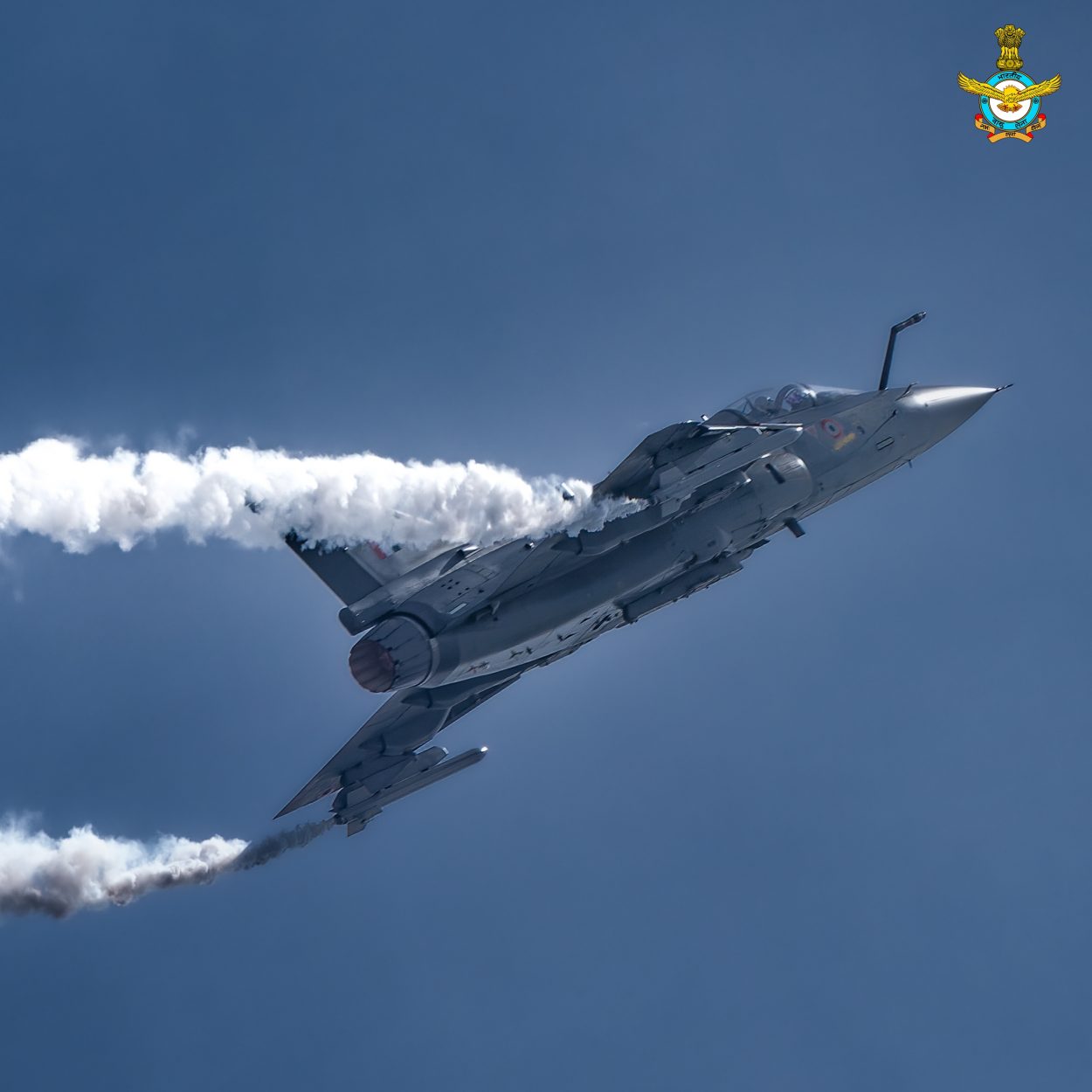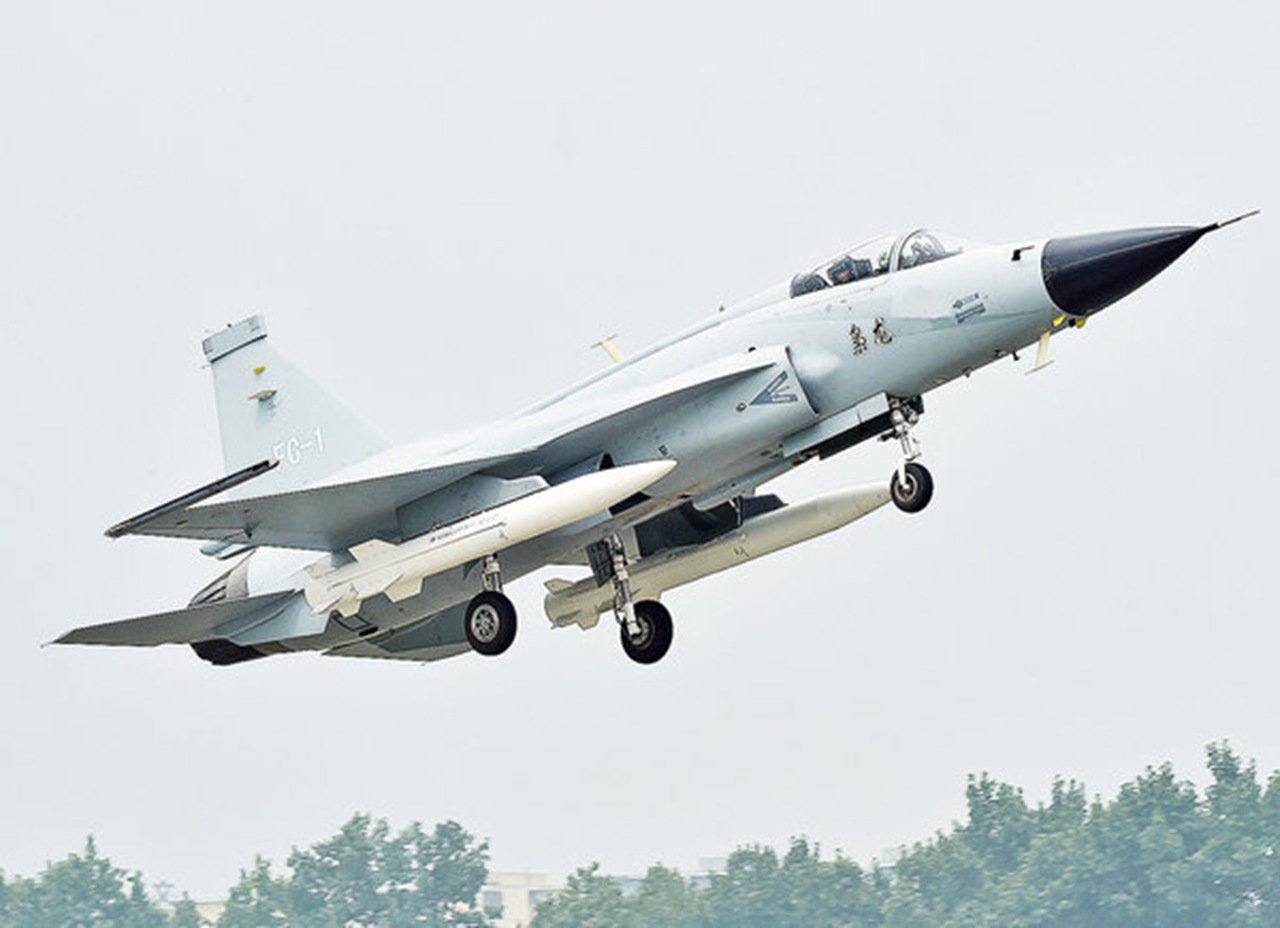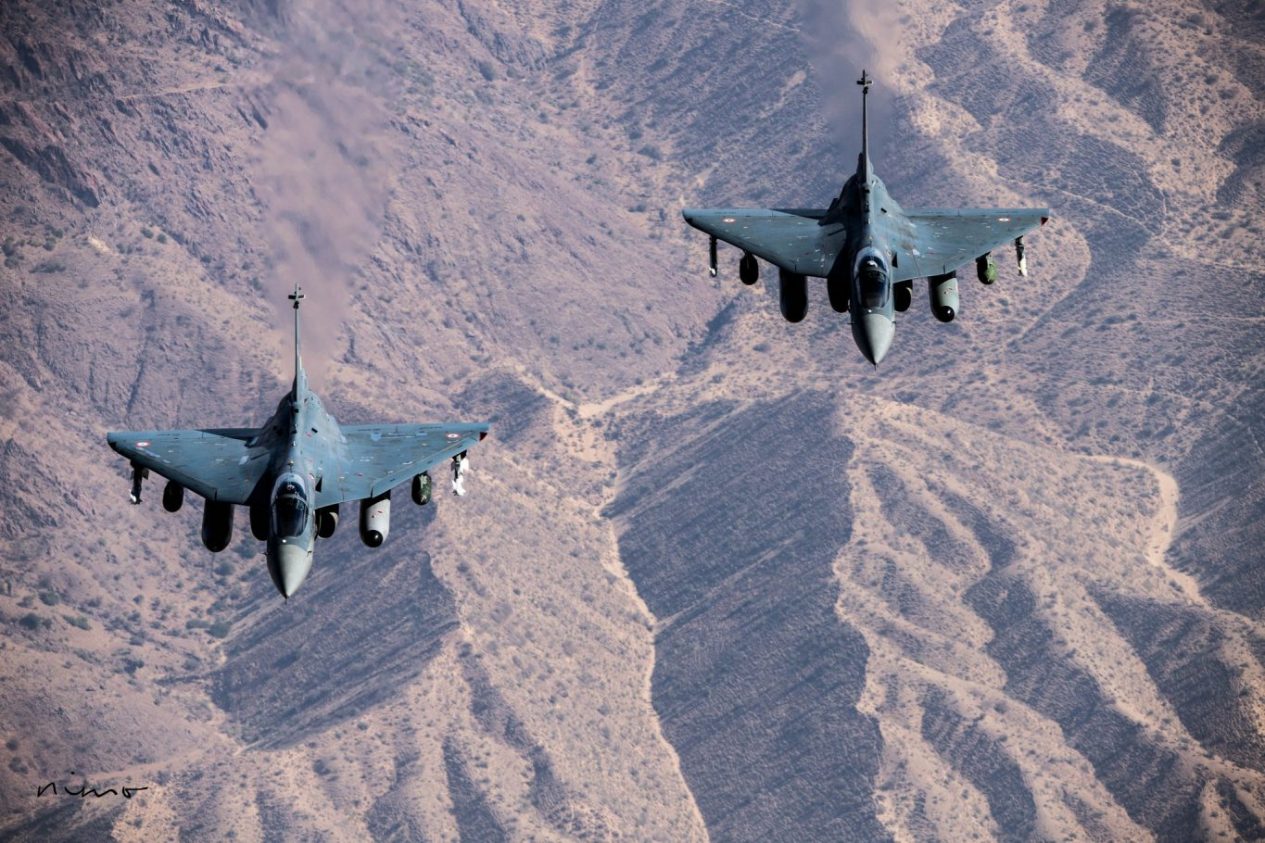The Indian Light Combat Aircraft (LCA) — Tejas demonstrated ‘exceptional flying capabilities’ once again, this time at the Singapore Air Show 2022, which began on February 15. However, its regional rival, the Chinese-Pakistani JF-17 ‘Thunder’, gave the aerial display a miss.
The flying displays are the most exciting and highly anticipated part of every major air show. LCA Tejas, which had enthralled the audience not too long ago at the Dubai Air Show, made a stunning appearance in Singapore, and the Indian Air Force tweeted and called it ‘A Diamond In The Sky.’
However, the one aircraft that is usually pitted against Tejas did not participate in the air show. The JF-17 Thunder skipped the flypast once again, even as Pakistan has been boastful about inducting the new Block III variant of the fighter jet.
The Chinese state-owned China National Aero-Technology Import & Export Corporation, however, displayed a variety of military aircraft, including JF-17 fighters, helicopters, and drones, at the air show that kicked off on February 15.
AVIC promoted the JF-17B Thunder twin-seat fighter trainer as its main product. The company also displayed the pure fighter version of the JF-17, the L-15 fighter trainer, the FTC-200G fighter trainer, and the K-8 trainer aircraft.
The JF-17 Thunder multirole fighter’s adaptability for numerous mission sets was praised by the organization. The platform’s flight performance characteristics at medium and low altitudes, integrated avionics, and armament systems were featured in a booklet. However, despite much pomp and vigor, the JF-17 Thunder was benched.

The Curious Case Of JF-17 Withdrawal
The pullout of JF-17 Thunder from aerial displays or simply not participating in events that feature the LCA Tejas has become a pattern in the past few years.
At the Dubai Air Show 2021, Pakistan’s JF-17 ‘Multi-Role Combat Aircraft,’ which was supposed to be pitched against the Tejas, withdrew at the last minute for no cogent reason. It appeared to be an attempt at avoiding direct comparisons with the LCA Tejas, both on the ground and in the air.
This was a recurrence of the JF-17’s sudden withdrawal from the Langkawi International Maritime and Aerospace Exhibition (LIMA) 2019, in which the Indian Tejas also took part.
In the Bahrain Air Show of 2016, where these two rival jets were given slots next to each other on the Tarmac for static display, the JF-17 did not show up due to reasons best known to its promoter.
Ever since the Bahrain Air Show of 2016, this Sino-Pak fighter jet has avoided being seen next to the Indian LCA that has become the poster aircraft of the Modi government’s indigenization initiative, and has gained great traction in the past few years.

However, it was perceived as heartburn in Pakistan as its ‘Thunder’ has been under the scanner owing to various technical concerns, especially with its engines, as previously explained by the EurAsian Times. This is also believed to be the reason behind Pakistan’s purchase of JC-10 fighters from China.
Further, the JF-17, which was earlier seen as a major contender for the Malaysian LCA tender alongside India’s Tejas, was surprisingly dropped from the list of final contenders that featured only six names. Indian Tejas remains a frontrunner for the Malaysian contract.
LCA Tejas Vs Pakistani JF-17
The Tejas is a single-engine fourth-generation light combat aircraft designed by India’s state-owned Hindustan Aeronautics Limited (HAL).
The aircraft was designed for the Indian armed forces by the Aeronautical Development Agency (ADA) in partnership with HAL’s Aircraft Research and Design Centre (ARDC). In July 2016, the aircraft was commissioned into the Indian Air Force. The fighter jet is outfitted with a variety of cutting-edge avionics and weaponry.
The Tejas Mk-1A and Mk-2 are enhanced versions of the LCA. HAL secured a Rs 48,000-crore contract from India’s Ministry of Defense (MoD) last year to provide 83 new Tejas Mk-1A fighter planes.
HAL gained confidence in the fighter jet’s export potential as a result of this purchase. However, The EurAsian Times had previously analyzed the challenges Tejas faces in terms of foreign sales.
The JF-17, on the other hand, is a medium-sized multi-role fighter plane designed jointly by China’s Chengdu Aircraft Corporation (CAC) and Pakistan Aeronautical Complex (PAC) to suit the Pakistan Air Force’s airpower requirements.
The fighter jet is available in single and twin-seat versions, with a total length of 14.9 meters. The plane is 4.77m height, 9.45m wide, and has a 24.4 m2 wing area. The JF-17’s empty weight is 6,441 kilograms, its maximum take-off weight (MTOW) is 12,700 kilograms, its loaded weight is 9,100 kilograms, and its maximum landing weight is 7,802 kilograms. The fuel weight of the plane is 2,268kg.

The Klimov RD-93 turbofan engine or WS-13 turbofan engine with a dry thrust capacity of 49.4 kN and a thrust afterburner of 84.4 kN powers the JF-17. The fighter jet has a maximum speed of 2,205 kilometers per hour, a range of 3,480 kilometers, an operational radius of 1,352 kilometers, and a service ceiling of 16,920 meters.
China Begins Delivering ‘Rafale Challenger’ J-10C Fighter Jets To Pakistan? New Images Take Social Media By Storm
The jet is equipped with 1 x 2 mm GSh-23-2 twin-barrel cannons, 57mm and 90mm unguided rocket pods, short-range AIM-9L/M, PL-5E, PL-9C, and beyond visual range (BVR) PL-12/SD-10 air-to-air missiles, and beyond visual range (BVR) PL-12/SD-10 air-to-air missiles. The MAR-1 anti-radiation missile, AM-39 Exocet anti-ship missile, and Ra’ad ALCM cruise missile are among the anti-surface missiles carried by the aircraft.
The JF-17 flew for the first time in 2003 and entered service in 2007. The Black Spider squadron was the first operational fighter fleet, with 14 JF-17s inducted in 2010. The Block III prototype flew for the first time in 2020 and is now being inducted into Pakistan’s Air Force.
While both aircraft have also had their share of hard times, the China-Pakistan joint product seems to be reeling under pressure and avoiding sharing the scene with its Indian counterpart.
- Contact the author at sakshi.tiwari9555@gmail.com
- Follow EurAsian Times on Google News




